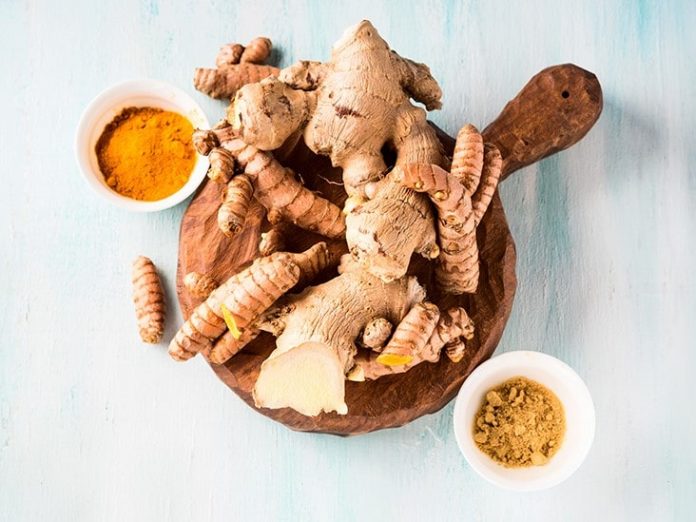Galangal is an aromatic spice and plant that has healing properties. Thanks to this, it has been used both in the kitchen and in natural medicine. Its medicinal effect is mainly due to the substance called galangin, which, among others slims, normalizes blood sugar and cholesterol. Check what other effects galangal has and where you can buy it.Know more about such plant healing properties, join 200-hour yoga teacher training in Rishikesh India from weblink.
Galangal ( galangant ) is a spice as aromatic and stinging as ginger, but more bitter and peppery in taste. In addition to its distinctive taste, Galangal is also characterized by numerous medicinal properties, thanks to which it has found application not only in the kitchen but also in natural medicine. In Southeast Asia – where it comes from – it is used to help treat:
- arthritis
- cough
- asthma
- diabetes
- obesity
Scientists have examined the plant and concluded that galangin in large quantities is responsible for its healing effects. It is a compound of natural origin, belonging to one of the flavonoid groups called flavonols. Galangine is also contained in bee putty, which thanks to it has strong antibacterial properties.
The name galangal is used to refer to the rhizome of four plants. The first is galangal smaller (and. Lesser galangal, Latin. Alpinia officinarum Hance ).The second is galangal greater (called. Greater galangal, Latin. Alpinia galanga, Languas galangal and Alpinia galanga ), also called Thai galangal / blue ginger or ginger. This variety is used most often and it is the best tested.
The third is kencur (Latin: Kaempferia galanga ), also known in Indonesia as kencur, aromatic or sand ginger.The fourth is Boesenbergia rotunda, or kra chai (called Chinese galangal, Chinese keys or finger-shaped roots).
Know about Galangal Benefits
- Galangal – slimming properties
- Galangal lowers blood sugar levels
- lowers cholesterol
- Galangal for nausea and digestion
- fights viruses, fungi and bacteria
- Galangal an alternative to anti-inflammatory drugs?
- The use of galangal in the kitchen
Table of Contents
Galangal – slimming properties
Indian scientists from KLE University’s College of Pharmacy argue in the magazine “Pharmaceutical Biology” argue that galangine has slimming properties. The 6-week study involved female rats treated with galangin isolated from the Alpinia galanga rhizome. Rodents were fed with a fat-rich feed with a caloric value of 25.3 kcal / g. One group of animals also received galangine 50 mg/kg by mouth. Another group of animals was given intraperitoneal sibutramine (standard slimming drug) at a dose of 2 mg/kg
It turned out that galangine, similarly to sibutramine, significantly reduced the bodyweight of rats after the first week of the study (by approx. 10%). In the following weeks, body weight was lower by an average of about 20 per cent. compared to control animals. At the end of the experiment, macular adipose tissue, liver weight, and liver triglyceride levels in rats receiving galangin and sibutramine were between 33 and 42 per cent. lower compared to control animals. Beneficial changes in lipid and carbohydrate metabolism have also been observed in slimmed rodents. The slimming effect of galangine contained in Alpinia galanga, scientists explain, among others inhibition of pancreatic lipase, hypolipemic and antioxidant activity.
Galangal lowers blood sugar levels
Galgant also has hypoglycemic properties ( reduces blood sugar levels ) –
Pakistani scientists from the Postgraduate Medical Institute showed this in a
study on rabbits. The animals were given powdered galgant root (Alpinia
galanga) and its water and alcohol extract. Both forms of galangant reduced
glucose levels.
The same effect was obtained by scientists from JSS College of Pharmacy (India) in laboratory rats, which were given alcohol extract from the galgant root (Alpinia galanga). The results of the study were published in the “International Journal of Pharmacognosy and Phytochemical Research”.
Galangal lowers cholesterol
Scientists from the Indian state of Kerala argue in the pages of the Indian Journal of Clinical Biochemistry that galangal (Alpinia galanga and Kaempferia galanga) lowers cholesterol. The results of animal studies have shown that the substances contained in the root of this plant reduce the level of total cholesterol and “bad” LDL cholesterol and triglycerides, and also significantly increase the level of “good” HDL cholesterol. Test animals consumed galgant extract at a dose of 20 mg/day for 4 weeks.
Galangal for nausea and digestion
Galangal, like ginger, helps digestion. The oil contained in the rhizome stimulates the secretion of saliva and gastric juice, has a cholagogic and antispasmodic effect, heals flatulence. In addition, galangal relieves nausea (can be used for motion sickness ).
Galangal fights viruses, fungi and bacteria
Due to the content of galangin, galangal has viral, fungicidal and bactericidal
properties. Researchers from Iraq have shown that the essential oil, water and
alcohol extracts from Alpinia galanga inhibit the growth of such bacteria as:
- pneumonia rod
- Escherichia coli
- blue oil rod
- Staphylococcus aureus
- Streptococcus pyogenes streptococcus
They also fight off fungi such as Trichophyton mentagrophytes, Trichophyton
longifusus and Microsporum canis.
Galangal an alternative to anti-inflammatory drugs
Scientists at West Bengal University of Animal and Fisheries Sciences (India)
argue that Alpinia galanga is as effective as nonsteroidal anti-inflammatory
drugs (NSAIDs). In a study on rats that induced inflammation in the form of paw
edema, galgant root extract was used and compared with steroid and
non-steroidal anti-inflammatory drugs. It turned out that it gives the same
effect. 6
The use of galangal in the kitchen
Galangal is best known in Thailand. It is used literally for everything, but the most popular galangal dishes are tom yum Kung ( tom yum goong ) or tom kha kai ( tom ka gai ). It is also added to seafood and meat dishes, to salads and sauces, including dips. In Indonesia, it is seasoned with traditional Soto soup and prepared with its help herbal drink – a pit. In Malaysia, we’ll find it in our ulam rice dish.
Galangant from Asia came to Central and Eastern Europe thanks to the Tatars. It was mainly used as a spice for various alcohols.
The rhizome can be stored in the refrigerator, preferably in a paper towel. Also suitable for freezing. Before eating, just like ginger, it should be scrapped. Usually, pieces of galangal are removed after cooking – they only have to give away their intense aroma. However, if you cook the dish for a long time and the galangal softens, you can eat slices.
Galangal – where to buy? What is the price?
In exotic spice stores from around the world and online stores. You can buy fresh, dried or ground rhizome, as well as in the form of ready-made pastes. However, to fully appreciate its aroma, it is best to buy fresh galangal.
🔥447













